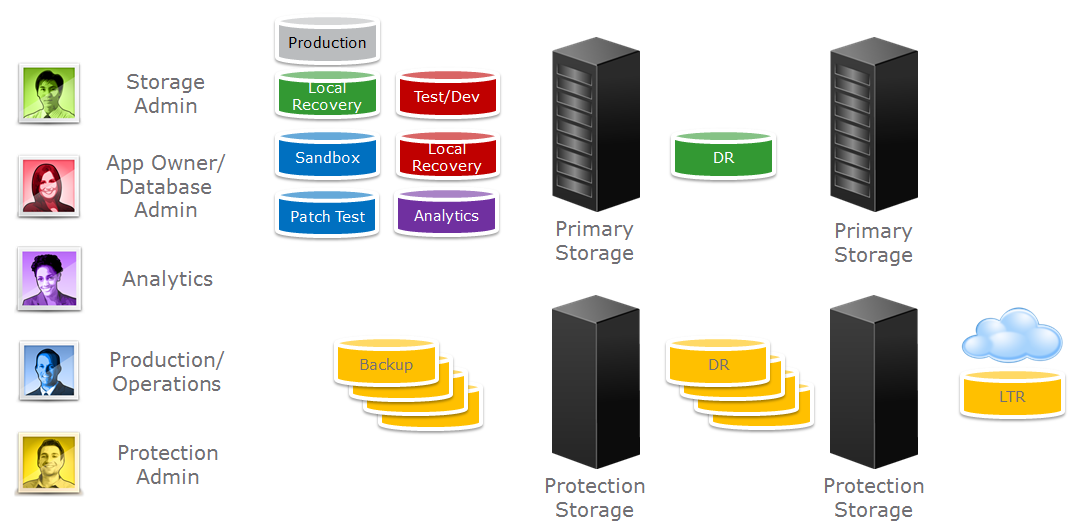If you’ve been following EMC’s latest announcements, one of the numbers you’ve seen repeated over and over… and over is $50 billion, the amount that the “copy data problem” is expected to cost customers globally over the next three years. Given such an outrageous number, it’s hard not to take a closer look at what’s causing this major cost overrun. I’ll save you the Google search and tell you right now: your numerous data copies are taking up valuable space on your storage, and the decentralized self-service methods of monitoring, managing, and protecting these copies are costing you a lot of time and money due to lack of oversight.

You can’t expect your DBAs and application owners to deviate from native copy creation processes, and you can’t get rid of every copy in your data center. Copies are vital to supporting nearly every task that shouldn’t be done with production data – operations, analytics, dev/test, data protection, and more. But how effective are you at managing those copies? Can you effectively mitigate the risk associated with self-service copy creation? Do you have the right number of copies on the right storage? Copy management solutions provide a central way to supervise copy creation and administration, which means you get to reclaim control of your copy data. With the right copy management solution, application owners and DBAs can continue to create copies while providing you with a way to oversee copy orchestration and ensure that copies are on the right storage to meet SLAs and mitigate risk.
Okay, so you get it – copy data management is relevant and important to enable self-service, ensure business compliance, and mitigate security and data protection risks. Now here’s the important question: which copy data management solution is best for you?
Traditional Copy Data Management
To date, most copy data management solutions have followed the same traditional approach and architecture. Basically, traditional copy data management consists of a server and storage. When installed, the CDM product is inserted into the copy data path and it copies your production database to the product’s own storage, creating a “gold” or “source” copy. The expert copy is the copy for which all other copies are derived, and it is kept up to date with your production database through a scheduled synchronization process.
However, this architecture has some drawbacks:
- Introduces a bottleneck in the copy data path
- Requires reworking operational workflows and additional hardware
- Copies are stored on a secondary storage device not designed for protection
- Centralized copy management hardware creates a single point of failure
The limitations of the traditional copy data management offerings have prompted the conception of a new architecture.
Modern Copy Data Management
Modern copy data management, like EMC Enterprise Copy Data Management (eCDM), allows you to non-disruptively discover copies across both primary and protection storage in your data center. It embraces the decentralized ways of creating copies and the various underlying storage technologies that empower efficient copy creation, orchestration, and protection. The solution will non-disruptively discover those copies and monitor their lifecycle across the data center. Then, using the same solution, you can create customized service plans, automate SLO compliance, and make informed decisions about your copy data. Through this model, storage administrators, backup administrators, application owners, and DBAs can continue to create copies however they wish while still providing you with the global oversight needed to ensure compliance with various business or regulatory objectives.
Now that I’ve described the solutions, you can decide – copy data is a problem, but how will you solve it?